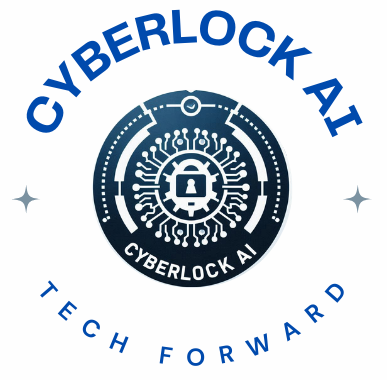 The NIST Cybersecurity Framework (CSF) is like a trusted playbook for many businesses when it comes to managing cybersecurity risks. If you’re looking to bolster your defenses against the dark arts of cybercrime, understanding this framework is your first stride in the right direction.
The NIST Cybersecurity Framework (CSF) is like a trusted playbook for many businesses when it comes to managing cybersecurity risks. If you’re looking to bolster your defenses against the dark arts of cybercrime, understanding this framework is your first stride in the right direction.
So, what exactly is the NIST CSF? Well, it was developed by the National Institute of Standards and Technology to help organizations understand, manage, and reduce cyber risks. Think of it as a guide that sets the stage for a more secure digital environment. It’s gained worldwide recognition for its effectiveness in providing a repeatable and proven method to stave off threats.
Now, why’s this NIST stuff suddenly important? Well, businesses across the globe are bearing the brunt of cyber attacks, with new threats evolving faster than the apps on your smartphone. Companies are now finding that merely having tech-savvy folks on the payroll just won’t cut it. That’s where NIST CSF training comes into play.
Training in the NIST CSF isn’t just for the IT crowd, either. It’s crucial for anyone responsible for handling sensitive information, from top executives to the fresh interns. With the right training, you’ll find yourself wading through cyberspace with a sense of confidence, ready to tackle whatever shady characters come your way.
Key Components of the NIST Cybersecurity Framework: A Deep Dive
It’s time to dissect the NIST Cybersecurity Framework like a pro. This framework’s got five major parts, all designed to keep the bad guys out and your data safe and sound.
Let’s kick things off with the identify function. This ain’t just about knowing your assets. You gotta recognize your risks, threats, and possible impacts. Understanding these building blocks sets you up for rock-solid security planning.
Moving on to protection mode. This one’s all about having the right safeguards in place. Firewalls, encryption, regular backups — you name it, this is where it all comes into play to secure critical assets.
The detect function is next. Here, you’re setting up a system to find cyber incidents the minute they happen. Your early warning system, if you will. Detecting a problem early is like spotting smoke before it becomes a raging inferno.
Respond and recover are the final act. Responding means having a game plan when things go sideways. Who does what, when? The recover bit ensures you bounce back better, minimizing impact and using that breach as a lesson for the future.
Understanding the tiers and profiles within NIST CSF helps you tailor the framework to fit like a glove within your organization. Consider these layers and adapt them to your specific business model for the best results.
Tailored Training Programs: Matching Course Content to Business Needs
NIST CSF training isn’t a one-size-fits-all deal. Whether you’re just starting or you’re the seasoned cybersecurity guru, there’s a course out there tailored just for you. Beginner courses focus on building a solid foundation, while advanced ones dive deep into complex strategies and applications.
Specific industries face unique challenges. What works in finance might not suit healthcare or manufacturing. Training programs often offer customizable modules to address these sector-specific policies and threats. This industry-focused training ensures that you’re not just learning theory but tackling the real-world issues your business faces.
A good training program not only fills your head with knowledge but also gets you practicing. Theory’s important, sure. But without applying what you’ve learned through practical exercises, it’s like knowing how to cook by just watching cooking shows. The most effective courses mix lessons with simulations and role-playing scenarios. This hands-on approach not only boosts learning but ensures you can apply it when it really counts.

Choosing the Right Training Provider: What to Look For
Selecting a training provider for NIST CSF courses can make or break your cybersecurity game plan. It’s crucial to go beyond the shiny brochures and bold claims and dig into the provider’s credentials and experience. Look for those who have been in the cybersecurity trenches, not just on paper but in the field.
Hands-on experience isn’t optional. You want trainers who encourage questions and foster a dynamic learning environment. Courses that support interactive learning with real-world scenarios rather than endless slideshows are typically far more beneficial.
Checking out reviews and testimonials from past participants can offer a wealth of insights. You’re looking for providers who consistently receive positive feedback on their delivery and curriculum effectiveness. It’s like checking reviews before you watch a new movie. Honest feedback means you can set the right expectations.
Consider the small print, too. Some courses offer follow-up support or access to online resources long after the training wraps up, which can be invaluable as you apply your new skills. This ongoing learning support can help keep your team up to date with the latest cyber threats and defense strategies.
Preparing for and Successfully Completing NIST CSF Training
Walking into a NIST CSF training session might feel a tad overwhelming at first, but knowing how to prepare can make all the difference. Expect a mix of lectures, practical exercises, and case studies. Getting familiar with basic cybersecurity concepts beforehand can give you a head start and make the learning curve less steep.
To get the most out of your training, active participation is key. Ask questions when in doubt and engage with the hands-on exercises. The more you put into the course, the more you’ll walk away with. Remember, this isn’t just about passing a test; it’s about acquiring skills that you can apply in real-life situations.
Post-training, it’s essential to apply what you’ve learned while it’s fresh. Create a personal action plan outlining how you will implement the concepts covered. Consider setting up a few ‘mock disaster’ scenarios to test your new skills and identify any gaps in your understanding.
Leverage the resources provided during your course. These might include workbooks, access to online platforms, and community forums where you can ask for advice or share insights with fellow trainees. Engaging with these tools can enhance your knowledge and give you the confidence to tackle different cybersecurity challenges.
Post-Training Strategies: Implementing and Sustaining Cybersecurity Improvements
Once you’ve wrapped up your NIST CSF training, it’s time to put those shiny new skills into practice. Integrating what you’ve learned into your daily operations doesn’t just strengthen security, it creates a culture of awareness across the board. Start by reviewing existing security protocols and compare them with the NIST CSF standards. This will show you where your biggest opportunities for improvement lie.
Continuing education is a major player in the cybersecurity field. The landscape changes faster than a trending topic, so staying updated with new threats and strategies is crucial. Subscribe to cybersecurity journals, join online forums, and attend workshops whenever possible.
Routine assessments can keep your system sharp and responsive. Regular audits help you spot weaknesses before they become a hacker’s gateway. Encourage your team to participate in these audits and foster an environment where everyone feels responsible and empowered to protect the organization’s digital assets.
Furthermore, track the outcomes of your training program by measuring its impact on operations and risk management. This could be through reduced incidents or quicker recovery times from cyber threats. Documenting these achievements not only highlights the training’s value but empowers you to make a case for continued investment in cybersecurity initiatives.
An open-door policy for feedback on your cybersecurity operations keeps the environment dynamic. As your staff actively contributes to these improvements, it boosts morale and brings fresh perspectives to the table.
